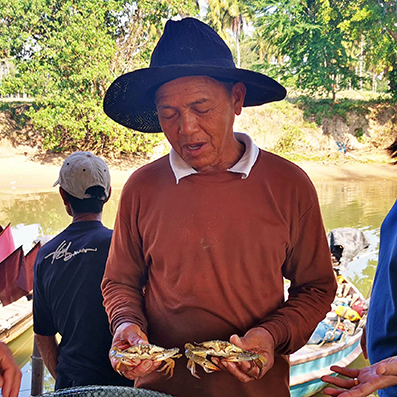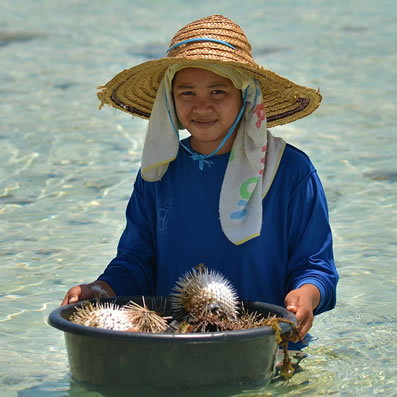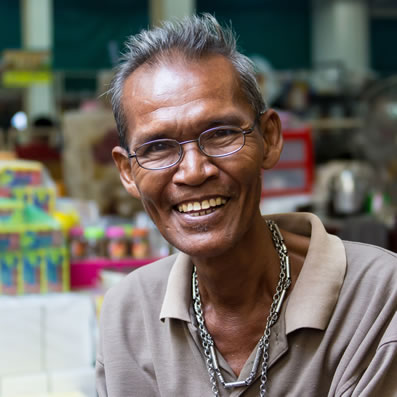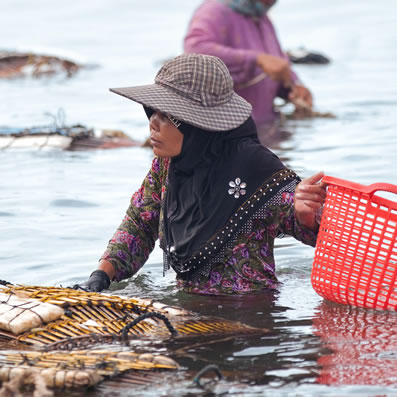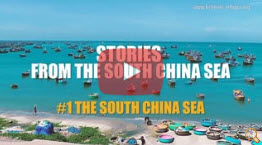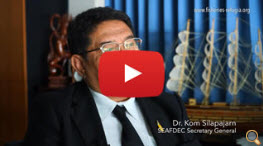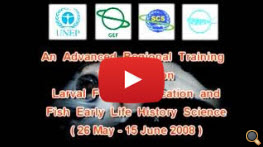THE SOUTH CHINA SEA FISHERIES REFUGIA INITIATIVE
FISHERIES REFUGIA PROJECT SITES
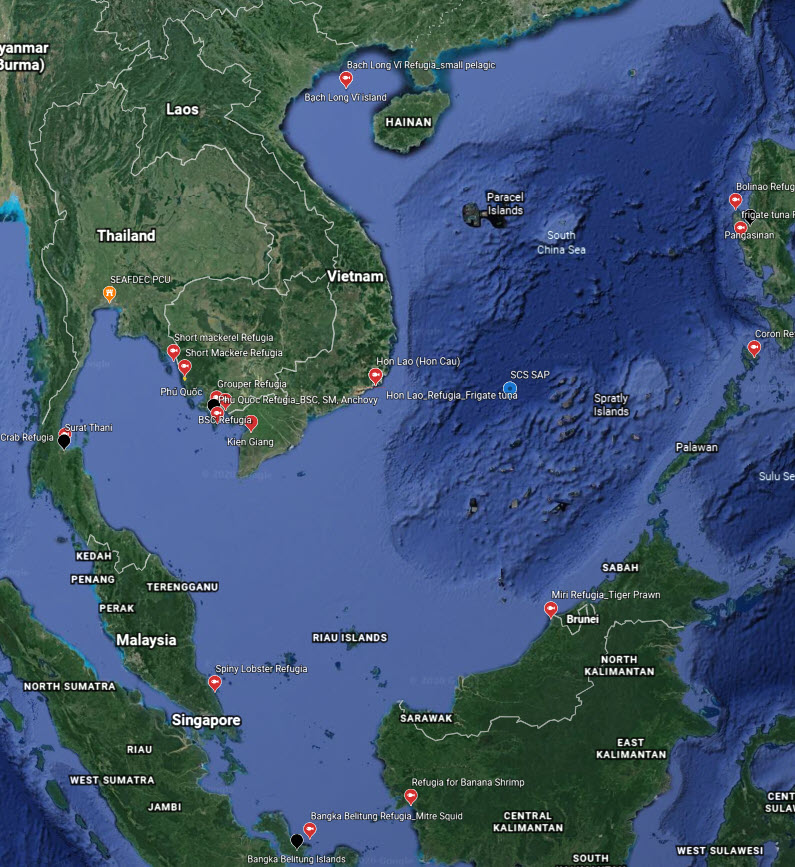 Click Here for
Click Here for More
Information
SCS SAP PRIORITY SITES (Habitat Linkages)
 All SCS SAP and
All SCS SAP and Fisheries Refugia
Priority Sites CHINA HABITAT
SITES CAMBODIA HABITAT
SITES INDONESIA HABITAT
SITES PHILIPPINES HABITAT
SITES THAILAND HABITAT
SITES VIET NAM HABITAT
SITES
Meet our Stakeholders
Social Media
Social Media
Integration of habitat conservation into fishery management in the South China Sea areas enhanced via the fisheries refugia approach
In the South China Sea area, the integration of habitat and biodiversity conservation into fishery management and practices has been improved through the efforts of concerned communities and governments. This approach is made possible under the Project “Establishment and Operation of a Regional System of Fisheries Refugia in the South China Sea and the Gulf of Thailand,” which received funding support from the Global Environment Facility (GEF) and was implemented by the United Nations Environment Programme (UNEP). With the main focus of establishing a regional system of fisheries management areas (fisheries refugia) in the South China Sea and the Gulf of Thailand, the project is executed by the Southeast Asian Fisheries Development Center (SEAFDEC) in partnership with the Fisheries Departments of the riparian countries of South China Sea, namely: Cambodia, Indonesia, Malaysia, Philippines, Thailand, and Viet Nam. Initially planned for 48 months from January 2017 until December 2020, the Project duration was extended until December 2022 to complete the implementation of the Project activities that had been delayed due to the COVID-19 pandemic situation from January 2020 to March 2022.
Nevertheless, as of March 2022, the communities in the fisheries refugia sites of participating countries have been working towards enhancing the integration of habitat and biodiversity conservation into fishery management and practices of the identified aquatic species that the respective countries had identified economically important. The effective management of critical threats to 12 of 14 fisheries refugia sites of about 660,236 ha is expected to be adopted by 2022. It is about 2.5 folds higher than the proposed refugia areas adopted by the GEF. The project results can restore fish stocks and habitats, essential parts of the marine ecosystem, particularly to the SDG 14.2 on sustainably managing and protecting marine and coastal ecosystems to avoid significant adverse impacts. In addition, the results also support SDG14.4 for effectively regulating harvesting and ending overfishing, illegal, unreported, and unregulated fishing, and destructive fishing practices and implement science-based management plans to restore fish stocks in the shortest time the SDG14.4.
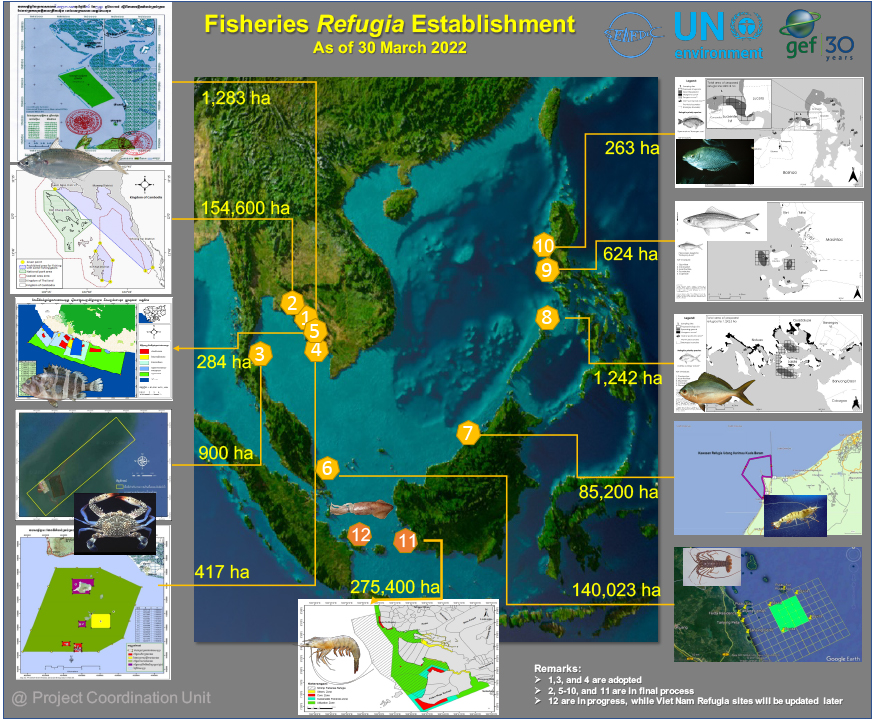
Figure 1: Fisheries refugia establishment in the South China Sea and the Gulf of Thailand as of March 2022
Specifically, the project is also aimed at aligning with the fisheries component of the Strategic Action Programme for the South China Sea, viz: build the resilience of Southeast Asian fisheries to the effects of high and increasing levels of fishing effort; improve the understanding among stakeholders, including fisherfolk, scientists, policy-makers, and fisheries managers, of the ecosystem and fishery linkages as a basis for integrated fisheries and ecosystem/habitat management; and build the capacity of fisheries departments/ministries to engage in meaningful dialogue with the environment sector regarding the improvement of fisheries and management of interactions between fisheries and critical marine habitats. As of March 2022, the participating countries have progressed their respective fishery refugia establishment, where fisheries refugia management is being effectively implemented and promoted for certain economically important commodities prioritized by the countries concerned. The overall achievements of fisheries refugia establishment by countries are summarized in Table 1

Three of the 14 refugia sites are approved, while the other eight refugia sites identified the boundary areas for the final approval process. Figure 1 maps the 12 of 14 refugia sites and the proposed boundary areas in the South China Sea and the Gulf of Thailand as of March 2022.
Meanwhile, the fisheries refugia establishment in Viet Nam has been delayed, although fisheries management systems in the identified priority refugia had been developed in the participating countries consistent with the ASEAN-SEAFDEC Regional Guidelines for Responsible Fisheries in Southeast Asia. More specifically, the draft Regional Guidelines on Indicators for Sustainable Management of Fisheries Refugia had been prepared. In addition, the structural frameworks together with criteria and indicators to enhance the effective management of fisheries refugia have been defined by the participating countries. It is expected that the experience gained from this project in the South China Sea area could be adapted in other marine areas of the world where over-fishing and the use of inappropriate fishing gears and practices are significant impediments to the sustainable exploitation of fisheries resources and utilization of coastal habitats. These all activities and achievements support the UN SDGs 14.2 and 14.4.
For more information on this project, please contact Dr. Somboon Siriraksophon, or visit the project website: https://fisheries-refugia.org
References:

_______________________ updated 30 May 2022 _______________________
